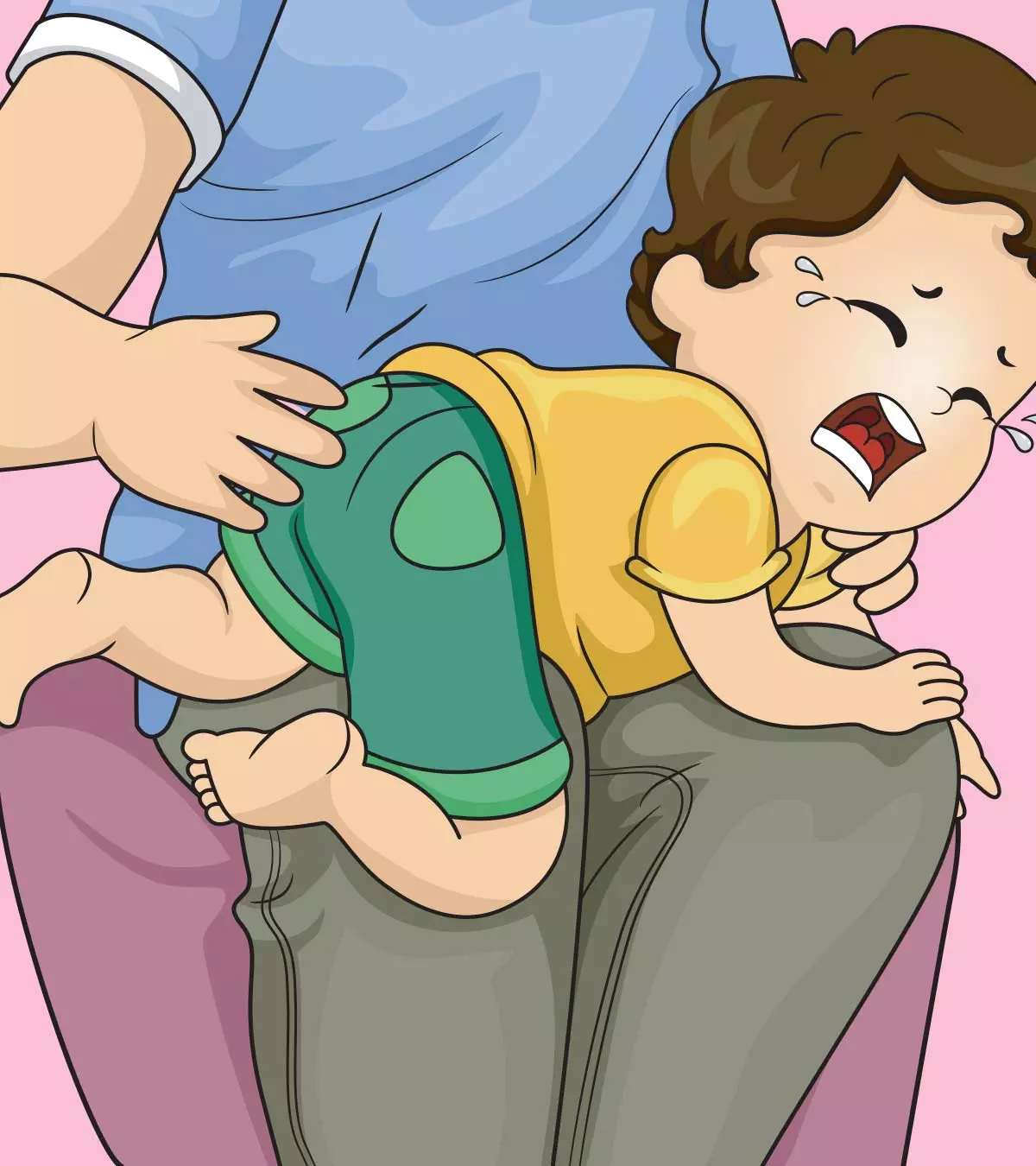
Image: ShutterStock
Tramadol belongs to the class of opioid analgesics used for pain relief

. Using tramadol when pregnant may be questionable due to concerns about the safety of the growing fetus. Body aches and pain commonly occur during pregnancy due to various reasons such as restricted blood flow, expanding uterus, or lack of adequate hydration. Home remedies are usually effective in managing most of these pains, such as back pain, leg pain, and abdominal cramps. Ideally, you should avoid taking medications unless the alternative treatments fail to produce relief. This post tells you about tramadol, its safety during pregnancy, side effects, and precautions to take.
Key Pointers
- The class of opioid analgesics includes Tramadol, a prescription medication used for treating moderate to severe pain.
- Side effects in newborns include congenital malformations, cardiovascular defects, potential respiratory depression, and psycho-physiological effects.
- Some common side effects of Tramadol are dizziness, nausea, anxiety, drowsiness, constipation, breathing problems, skin rash, and seizures.
- If you plan to start taking Tramadol, inform your doctor about any medications or treatments you have received previously.
- Neonatal opioid syndrome can occur if Tramadol is taken for prolonged periods during pregnancy.
What Is Tramadol (Ultram)?
Tramadol is a prescription medication for treating moderate to severe pains caused by vascular, traumatic or inflammatory diseases
. It belongs to a group of drugs known as opioid analgesics, which work by obstructing pain signals and changing the way the brain and nervous system react to pain.
 Did you know?
Did you know?It is available in tablet and capsule forms and can be taken with or without food. It is available under the brand names Conzip and Ultram ER, and in combination with acetaminophen under the name Ultracet (1).
Can You Take Tramadol When Pregnant?
You should not take tramadol during pregnancy unless your doctor prescribes it. The US Food and Drug Administration has classified this drug under category C, which means animal trials have shown adverse effects on the fetus, and there are no well-controlled studies in humans.
Using tramadol during the early stages of pregnancy (vital time for the growth of the baby) has been shown to cause congenital malformations and cardiovascular defects (2). Also, prolonged usage of tramadol even at a low dosage during pregnancy can cause neonatal opioid syndrome (the baby will be born with symptoms of opioid dependency or addiction) (3).
Labor or Delivery
Tramadol crosses the placenta and has the potential to cause respiratory depressioniAlso known as hypoventilation, it is a condition in which the lungs cannot exchange gasses effectively, leading to difficult breathing. and psycho-physiological effectsiThe effects of the physiology in response to specific psychological manipulations. in newborns. So, it is not recommended for use before or during labor. The usage of tramadol can prolong the labor by reducing the rate of cervical dilationiThe softening and opening of the cervix that starts at the beginning of labor. (1).
What If You Have Already Taken Tramadol (Ultram) During Pregnancy?

If you have been on tramadol before pregnancy or have taken it during pregnancy without prescription, let your doctor know about it.
What Are The Side Effects Of Taking Tramadol During Pregnancy?

The most noticeable side effects of taking tramadol during pregnancy are dizziness, nausea, anxiety, drowsiness, and constipation. In some cases, there might also be breathing problems, skin rash, and seizures (4).
Can Tramadol Cause Miscarriage?
A few studies have suggested that withdrawal of opioids during pregnancy may cause sudden miscarriage or preterm birth (5). However, more research is needed.
Can Tramadol Increase The Chance Of The Baby Having Birth Defects?
Only a few studies have shown an increase in birth defects due to opioid medications. There is a very small or no confirmed risk of birth defects due to tramadol usage (6).
Does Tramadol Cause Other Pregnancy Complications?

Studies evaluating opioid exposure during pregnancy suggested that exposure to tramadol during early pregnancy was associated with a statistically significant increased risk of clubfootiA congenital disorder that causes a baby’s foot to turn in and point downwards. in the newborn (7).
The same study also reported that tramadol is associated with anencephaly (absence of cerebral hemispheres) and Spinal bifida (defects in the formation of the backbone) in the newborn.
 Experts say
Experts sayDoes Tramadol Cause Withdrawal Symptoms In The Baby After Birth?

Intake of opioids (tramadol) during pregnancy can result in withdrawal symptoms in the newborn. The group of symptoms is described as neonatal abstinence syndrome (NAS) and appear in the first week of the baby’s life.
The symptoms include vomiting, irritability, and faster heart rate (8).
General Precautions To Follow While Taking Tramadol

Take these steps before consuming tramadol:
- Inform your doctor or pharmacist if you are allergic to any of the active ingredients in tramadol.
- Tell your doctor about all the prescribed and non-prescribed medications you take regularly. Medications including anticoagulantsiBlood-thinning drugs that stop blood from clotting. and antidepressants, can interact with tramadol and affect maternal health.
- Inform your doctor about the herbal supplements and prenatal vitamins you might be taking.
- If you have any chronic health conditions such as diabetes, asthma, breathing disorder or lung infections, tell your doctor about them.
- Discuss your medical history, including any surgical treatment for any ailments including cancers and tumors.
- Tramadol makes you drowsy. So take caution and do not drive cars after you take the drug.
- Tramadol medication should not be stopped abruptly as it may cause withdrawal symptoms, always consult your doctor and reduce the dosage gradually.
Frequently Asked Questions
1. For how long does tramadol stay in the system of pregnant women?
On average, it takes up to three days for the tramadol to get cleared from a healthy individual’s system (9).
2. Is tramadol more effective than codeine?
According to clinical drug trials, the maximum analgesic efficacy of tramadol for treating acute pain following oral surgery is comparable to that of 60 milligrams of codeine. Still, it is less effective than a codeine combination, such as aspirin/codeine or acetaminophen/codeine (10).
3. How can I get tramadol out of my system?
There’s no specific method to speed up tramadol’s removal from an individual’s body. However, eating a well-balanced diet, staying hydrated, and exercising regularly can help your natural process work properly and get rid of the drug.
Tramadol is a prescription-based opioid painkiller. Some researchers consider it to be among the medications to avoid during pregnancy due to its potential to affect fetal development and cause other potential problems, such as miscarriage and preterm labor. Hence, tramadol should not be used during pregnancy unless prescribed by the treating gynecologist. The doctor will prescribe tramadol only if the benefits outweigh the risks. If you are experiencing any painful health conditions, consult a chronic pain specialist, who is an expert in assessing and prescribing medications during pregnancy.
Infographic: Precautions For Taking Tramadol In Pregnancy
Although Tramadol is used to treat moderate to chronic pain caused by inflammatory diseases, avoid the medication in the initial stages of pregnancy. However, you may take the drug in the later stages, only after your doctor’s approval. Follow the precautions mentioned in the infographic below to prevent its adverse effects.
Some thing wrong with infographic shortcode. please verify shortcode syntax
Illustration: Can You Take Tramadol While Pregnant?

Image: Stable Diffusion/MomJunction Design Team
Tramadol is a powerful pain reliever, but is it safe to use? Find out in this video as we explore the safety of using Tramadol to treat your pain.
References
1. Tramadol information; Postmarket drug safety information for patients and providers; US Food & Drug Administration.
2. Kallen B, Reis M; Use of tramadol in early pregnancy and congenital malformation risk; US National Library of Medicine National Institutes of Health (2017).
3. Ultram ER highlights of prescribing information; US Food & Drug Administration.
4. Tramadol hydrochloride- highlights of prescribing information; US National Library of Medicine.
5. Eung Don Kim, et al.; Guidelines for prescribing opioids for chronic non-cancer pain in Korea; US National Library of Medicine National Institutes of Health (2107).
6. Masha M. Yazdy; Rishi J. Desai; Susan B. Brogly; Prescription opioids in pregnancy and birth outcomes: a review of the literature; US National Library of Medicine National Institutes of Health
7. Jennifer N.Lind, et.al.; Maternal use of opioids during pregnancy and congenital malformations: a systematic review; Pediatrics- Official Journal Of The American Academy Of Pediatrics
8. S. Hartenstein, et.al.; Neonatal abstinence syndrome (NAS) after intrauterine exposure to tramadol; Academia
9. Manraj Dhesi et al., Tramadol ; US National Library of Medicine, National Institutes of Health
10. Muna Subedi et al., An overview of tramadol and its usage in pain management and future perspective (2019).
Community Experiences
Join the conversation and become a part of our nurturing community! Share your stories, experiences, and insights to connect with fellow parents.
Read full bio of Dr. Christian Pope
Read full bio of shreeja pillai
Read full bio of Swati Patwal
Read full bio of Lorraine Teron
















